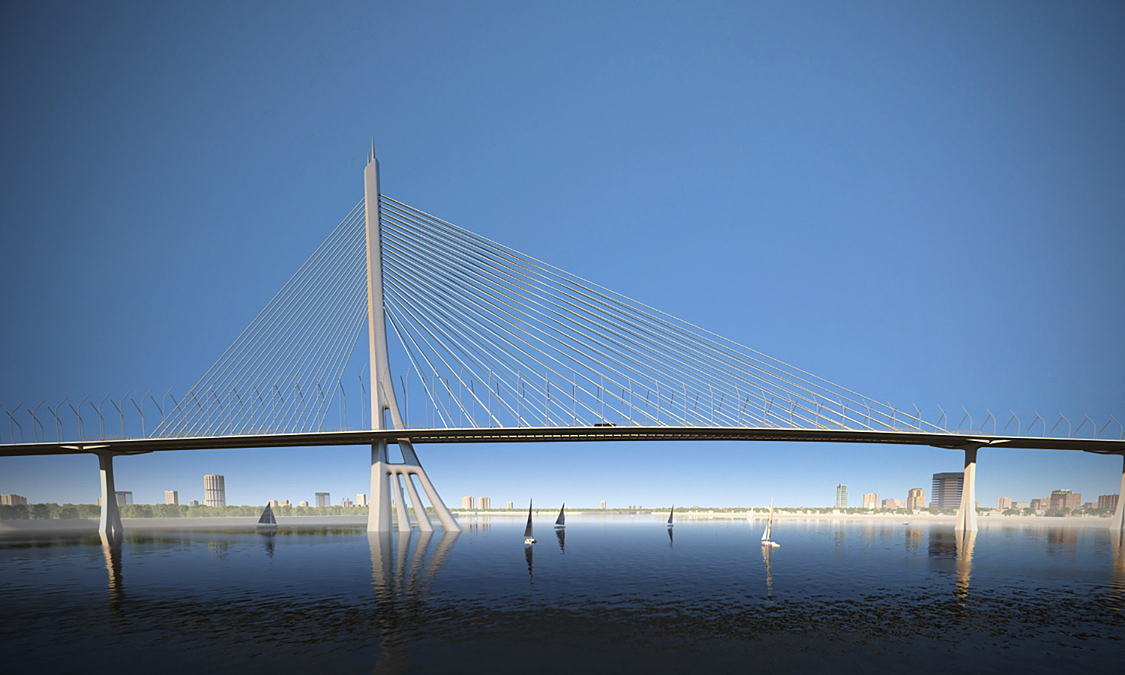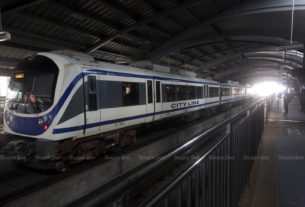
Vietnam’s new Can Gio, Cat Lai and Thu Thiem 4 bridges to help link regions and ease Ho Chi Minh City’s infrastructure bottlenecks
The Can Gio, Cat Lai and Thu Thiem 4 bridges, worth more than VND21 trillion ($926 million), will help link regions and ease HCMC’s infrastructure bottlenecks.
The largest scale is Can Gio Bridge, with a total investment of nearly VND10 trillion.
The bridge crosses Soai Rap River, connecting outskirt districts of Can Gio and Nha Be to the center of Ho Chi Minh City.
Six years ago, then Prime Minister Nguyen Xuan Phuc agreed to assign the Ministry of Transport to review and add this project to the transport development plan for HCMC until 2020, with a vision after 2020.
The city then organized a selection of bridge design options. Of the 17 proposed concepts, the bridge with cable-stayed design architecture and a tower in the shape of a mangrove tree – a characteristic of Can Gio – was selected.
According to this plan, Can Gio Bridge will be 3.4 kilometers long and have four lanes. The project’s starting point is at the intersection of road 15B with road No. 2 in Nha Be District, while the end point connecting Rung Sac Road is nearly two kilometers from Binh Khanh ferry terminal in Can Gio District.
The Can Gio Bridge project was expected to combine investment between the BT (build – transfer) form, with capital of about VND7.6 trillion and BOT (build – operate – transfer), comprising VND2.4 trillion.
However, after the Law on Investment in the form of public-private partnership (PPP) removed the BT form, the project had to source other investment capital.
Currently, the project is scheduled for implementation in the period 2023-2028.
Last year, the Department of Transport proposed HCMC People’s Committee assign tasks and allocate capital to prepare a pre-feasibility study report in order to soon deploy Can Gio Bridge. Once the bridge is built, it will increase the connection between the southern part of the city and the coastal district of Can Gio.
In addition, the bridge will help meet the needs of travel and goods trade and promote development of the project on sea encroachment along with Can Gio tourist urban area.
Cat Lai Bridge will have a planned total investment of more than VND7.2 trillion ($317.65 million) and is expected to replace Cat Lai Ferry to link the southern business hub with nearby Dong Nai province and the beach town of Vung Tau.
Though it has been 20 years since it was approved, the bridge has not been built due to funding difficulties.
Three years ago, the PM agreed to assign Dong Nai to preside over the project and make plans to send up to HCMC officials for consideration and unified implementation. Many options were then proposed, but the parties failed to make any decision.
The bridge has a cable-stayed design with two towers. The 650 meter long bridge will have six car lanes and three rudimentary lanes, along with a 1.5 meter walking margin on each side.
Recently, the consulting firm Transport Engineering Design Inc. (TEDI) proposed five design options for Cat Lai Bridge. In which, the consulting agency prioritizes option two due to many advantages such as the shortest length, less ground clearance, low cost and convenient traffic connection.
With this option, Cat Lai Bridge will start along the Saigon River, along the planned road of Thanh My Loi B residential area and cut through Vo Chi Cong Street at Ky Ha 3 and 4 bridges. Then, the route will follow the green corridor of Ngon Ngai canal and crosses Dong Nai River through Dong Nai’s Nhon Trach District.
On the Dong Nai side, the project passes through Phu Huu and Phu Dong communes, crosses 25C road, connects Ben Luc – Long Thanh Expressway. The length of the whole route is more than 10.6 kilometers.

Currently, in the above area, HCMC connects traffic through neighboring provinces of Dong Nai and Ba Ria – Vung Tau, mainly via Cat Lai Ferry and HCMC- Long Thanh – Dau Giay Expressway, which is already overloaded.
The construction of Cat Lai Bridge is expected to help stimulate economic and social development in the area.
With a total capital of VND5.3 trillion ($233.8 million), the Thu Thiem 4 Bridge project will be connecting Thu Thiem new urban area with District 7. This is one of 59 key projects registered by the Department of Transport to prepare for finding investment.
The bridge by design will start at the intersection of Tan Thuan 2 Bridge – Nguyen Van Linh, travel along Nguyen Van Linh Street and connect to Luu Trong Lu Street in District 7. It will cut through Tan Thuan port area, cross the Saigon River to connect with Thu Thiem urban area in Thu Duc City.
The project was previously planned to be implemented under a BT contract, so after the form was eliminated in the PPP Law, the project had to adjust its investment policy. According to plan, the project is expected to be implemented in the 2024-2028 period.
According to the Department of Transport, the investment in building Thu Thiem 4 bridge is necessary, in order to reduce traffic pressure from Thu Duc City and Binh Thanh District to 7, 8, Binh Chanh and Nha Be districts.
Source: https://e.vnexpress.net/news/news/three-bridges-expected-to-bring-jolt-to-hcmc-4424414.html


